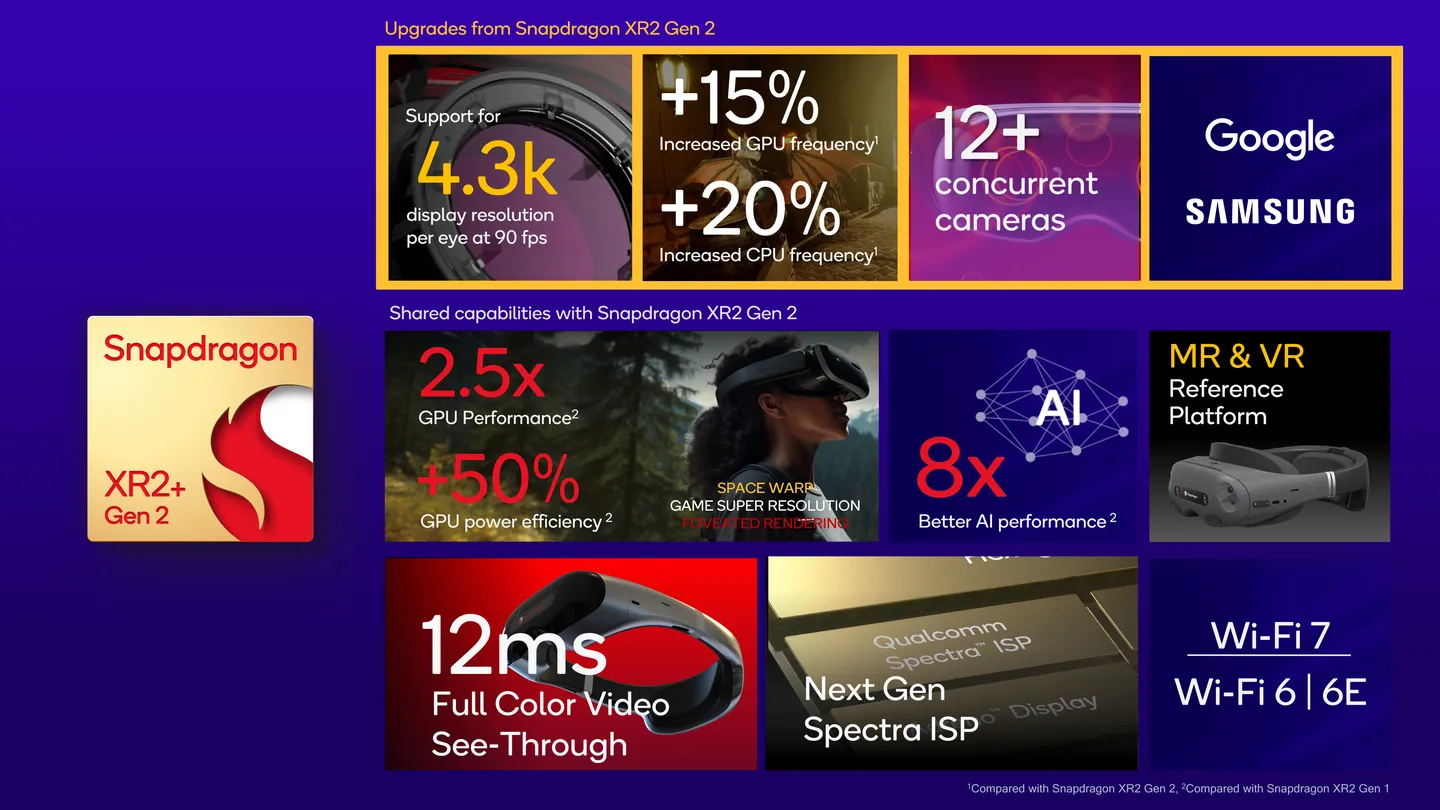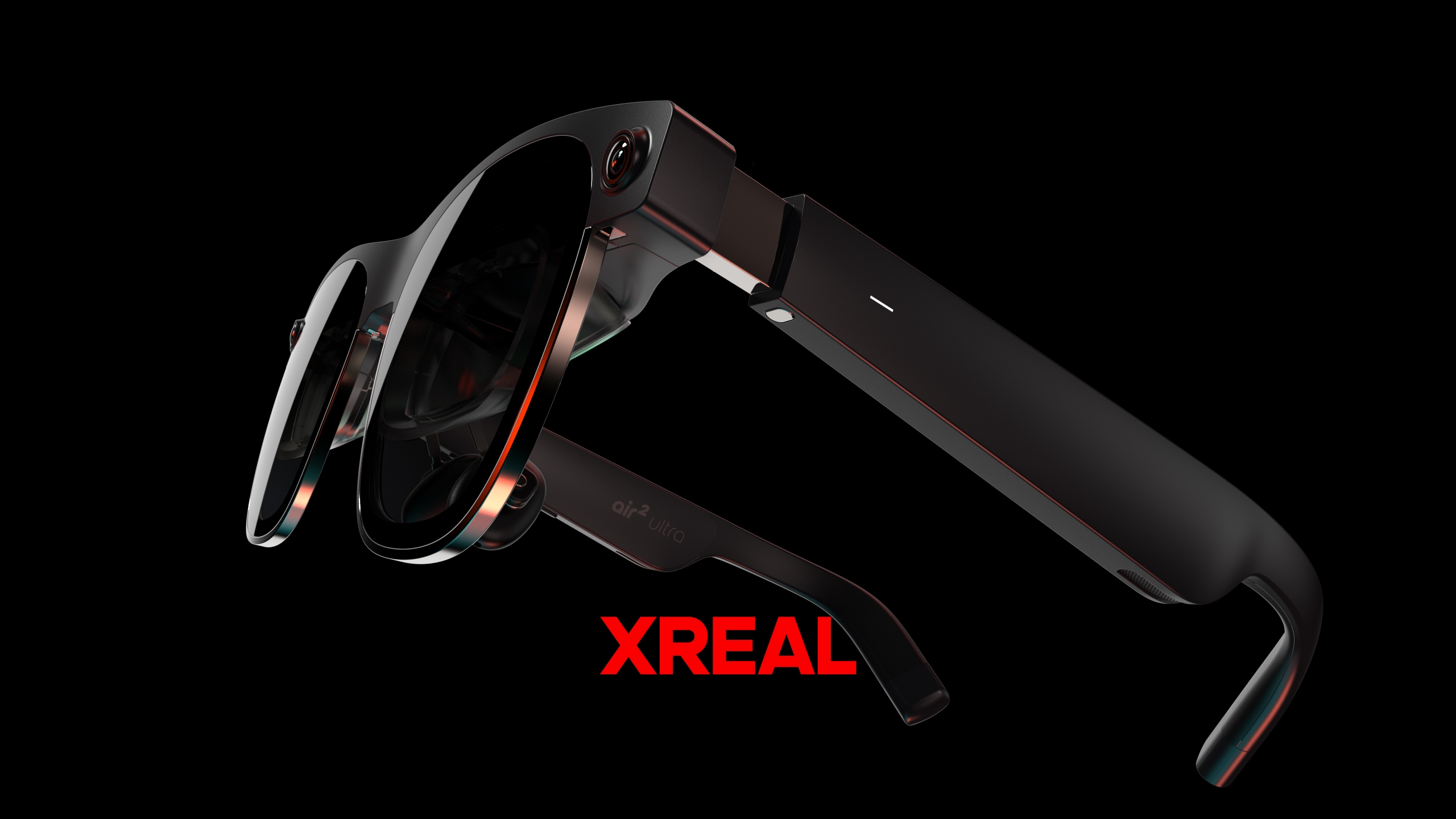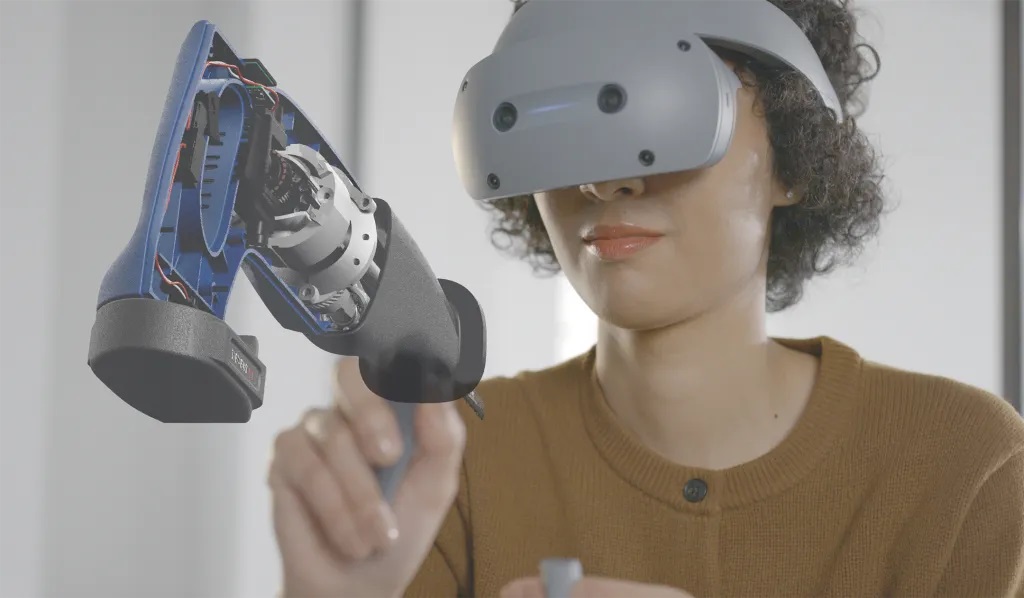Every January, the Las Vegas convention centers are full to the brim with exciting new tech for CES, and that’s no different for CES 2024. And what tech is more exciting than the best VR headsets and AR glasses?
We scoured CES 2024 for the best VR and AR tech announcements. We drove in AR-powered cars, tested a bunch of different glasses, and even subjected ourselves to a haptic suit.
It was all worth it, though, to find five fantastic gadgets for this CES 2024 round-up.
If you want to check out more of the awesome tech showcased at CES, we’ve got a guide to the 20 best gadgets of CES 2024 and the best wearable and fitness tech of CES 2024.
1. New Qualcomm XR2+ chip
This isn’t a VR headset, and, technically, it was revealed before CES, but we’re including it here because Qualcomm gave us a more in-depth look at the Snapdragon XR2+ Gen 2 at the Las Vegas tech convention. This chipset is going to feature in a number of the best VR headsets we see released in the next few years.

This powerful successor to the XR2+ Gen 1 found in the Meta Quest Pro will power the next generation of enterprise headsets. This includes the Samsung VR headset being developed in partnership with Google.
In practical terms, the chipset can support displays up to 4.3K resolution per eye running at 90Hz, boasts a 2.5x better GPU performance than the XR2 Gen 2 found in the Meta Quest 3, and has 8x better AI performance. It can also support Wi-Fi 7 and full-color mixed reality passthrough.
Qualcomm is currently the name in the XR chipset game, and we expect the XR2+ Gen 2 will only further cement its position. And it might help rival XR gadgets prove they're just as capable as the Apple Vision Pro.
2. Asus AirVision M1 glasses
Speaking of Apple, this year’s CES prize for the gadget that sounds most like a knockoff Apple product goes to the AirVision M1 glasses from Asus.

The name might be reminiscent of the Vision Pro – sprinkling in aspects of the iPad Air and Apple’s M1 chipset found in some iPads and Macbooks – but is almost completely unrelated to Apple’s hardware. The only minor similarity is that these specs are a wearable AR display.
The Asus glasses don’t function on their own; you need to plug them into a compatible phone or computer with a USB-C display port (meaning it can output video and audio through USB-C). These kinds of gadgets are admittedly a lot of fun, but our experience with them is that they’re still pretty pricey for what you get. The resolution is only full-HD, and you often need to buy several not-so-optional add-ons to get the most out of your experience – raising the price above the usual $400 / £400 / AU$600 price you already pay for smart spectacles.
We haven’t yet tried the Asus AirVision M1 glasses – nor do we know what regions they’ll be available in or when the launch date is – so we’ll reserve judgment on them for now. But if you’re after a pair of specs that lives up to what you expect from “AR glasses” the next item on this list might be a better pick.
3. Xreal Air 2 Ultra

Xreal makes some of our favorite smart glasses – you can find out more about the AR specs it made before in our Xreal Air review and Xreal Air 2 Pro review – and at CES 2024, it debuted something that promises to be even better than what we’ve seen from it in the past.
The Xreal Air 2 Ultra goes beyond simply projecting an AR screen in your real-world space like its predecessors. It’s a proper spatial computer complete with a camera – so the device can track your hands and identify real-world objects that virtual elements can interact with.
However, while the glasses sound a lot like the Apple Vision Pro there’s one downside – you need an external device to power them. Specifically, Xreal lists only the Samsung Galaxy S22, the Samsung Galaxy S23, and a “custom computing unit” that is yet to be released as the gadgets fit for the job. If you aren’t interested in spatial computing you could use them as a wearable full-HD display for any gadget with a USB-C display port.
On the flip side, even if you buy a new Samsung phone, you could get a whole Xreal spatial computing package for around $1,000 / £1,100 if you can find a Galaxy S22 on sale. This is less than a third of the price of the $3,499 Apple Vision Pro – though it is a lot pricier than the $499.99 / £479.99 / AU$799.99 Meta Quest 3.
We don’t yet know how well this Air 2 Ultra experience compares to its rivals, but if it can deliver a solid experience Xreal could be on to a winner.
4. AR glasses in a car

BMW has been finding ways to bring XR tech to cars for a while. We’ve previously seen its efforts to bring VR offices and entertainment on your travels so car passengers can do more with their journey, but its CES 2024 demo centered on drivers.
Thanks to a pair of Xreal Air 2 glasses, we saw AR directions that guided us through the streets of Las Vegas (for the demo, we were in the passenger seat while someone else drove). We could also see warnings about upcoming potholes, stop signs, and how much charge the electric vehicle had left.
This was all just a very well-made research pilot to help inform the future of driving tech. But the BMW AR experience sold us on the idea, so we hope this kind of tech isn’t too far from being more than just a prototype.
5. Sony’s enterprise headset

Most people think of entertainment when they think of VR, but there’s a huge push to bring more XR gadgets to industry – a trend that the newly announced Sony XR headset continues.
Created in partnership with Siemens, the device is designed to help companies bring more stages of production – in particular, design and prototyping – into the metaverse. Using the headset, they can produce and analyze 3D models of their designs and diagnose any issues before investing in real-world prototypes.
In general, the headset looks pretty standard, but it does feature an odd pair of handsets. One is a more traditionally shaped VR controller, while the other is a ring. The advantages of this setup are that you have a hand free to more easily interact with real-world objects, and you can get hands-on with virtual objects while still having the convenience of buttons on a controller.
There’s not much more to say about the headset for now, but given its standalone design maybe it’ll pave the way for a successor to the PSVR 2 headset that’s no longer tethered to a PlayStation console.
You might also like...
from TechRadar - All the latest technology news https://ift.tt/1CNRHqc
No comments:
Post a Comment